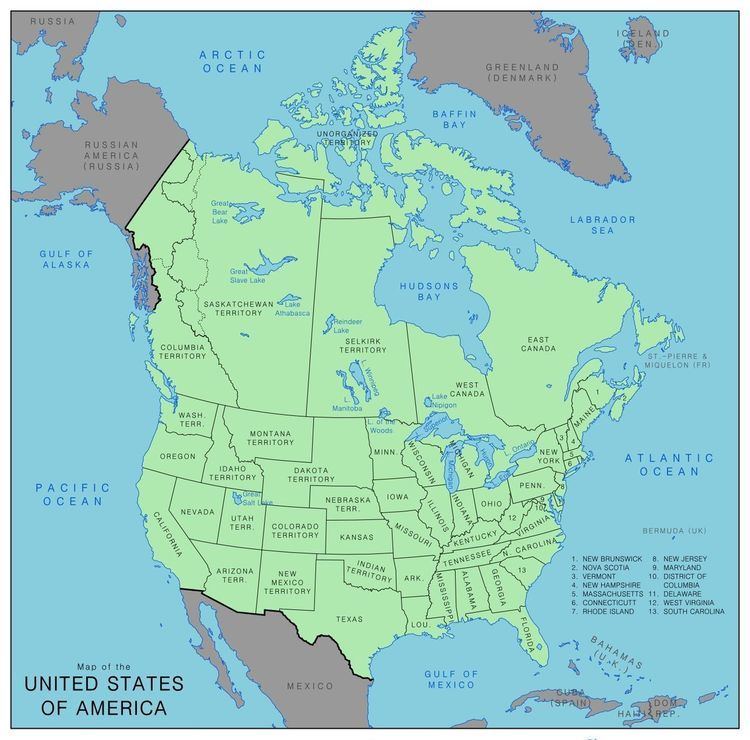 | ||
The Annexation Bill of 1866 was a bill introduced on July 2, 1866, but never passed in the United States House of Representatives. It called for the annexation of British North America and the admission of its provinces as states and territories in the Union. The bill was sent to committee but never came back, was never voted upon, and did not become law. The bill never came to the United States Senate.
The bill authorized the President of the United States to, subject to the agreement of the governments of the British provinces, "publish by proclamation that, from the date thereof, the States of Nova Scotia, New Brunswick, Canada East, and Canada West, and the Territories of Selkirk, Saskatchewan, and Columbia, with limits and rights as by the act defined, are constituted and admitted as States and Territories of the United States of America." It provided for the admission of all the colonies and the purchase of the Hudson's Bay Company's lands for $10,000,000. The American government would assume public lands and state-owned bonds and the right to levy taxes and, in return, would take over provincial debts to the total of $85,700,000 and give an annual subsidy of $1,646,000 to the new states. In addition, the United States would connect Canada with the Maritimes by rail and spend $50,000,000 to complete and improve the colonial canal system.
The bill was introduced by Congressman Nathaniel Prentice Banks, a representative from Massachusetts. It was intended to appeal to Irish Americans who supported the Fenian Movement and were aggressively hostile to Britain. Indeed, much of American public opinion at the time was hostile because of Britain's perceived support for the Confederacy during the American Civil War. There was no serious effort in Washington to annex Canada.
Its introduction and similar interest in annexation by the United States possibly provided a little incentive for the organization of Canada as an entity distinct from Britain; indeed, the bill's introduction preceded Canadian Confederation by less than a year. However the Fenian raids had much more influence in shaping determination to hurry the Confederation process.
